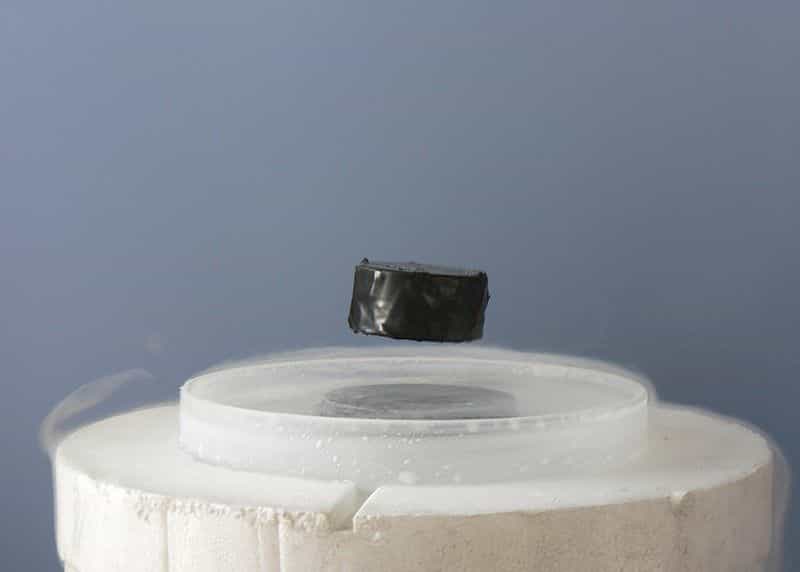
Electricity and semiconductors transformed the whole world. It made many innovations possible, such as electrical machines, electronic devices, and blink of an eye-fast communication. Superconductors have the potential to be at least as revolutionary. There is only one problem; the researchers need to find out how to make them work in everyday life environments.
If researchers found a way to make a single material superconducting, in room temperature, we would solve the world’s biggest energy problems.
The dream of frictionless electricity
Superconductivity occurs when materials stop resisting an electric current. In other words, it means frictionless electricity. Materials that harbor this simple, resistance-free flow of electrons are called superconductors.
As you probably already know, electricity is generated when electrons flow from one atom to another. The technology we have today requires the electricity to move regardless of the resistance. But the resistance causes traditional conductors, usually copper wires, to lose power each time an electron moves. The loss manifests in the released heat. That is why your laptop sometimes gets overheated or a lightbulb burns out. That is also why a lot of power is lost in the electricity networks.
Since supercondoctors do not lose power when electricity flows through them, they would be a great alternative. If we could use them instead, all of our electrical products would be more efficient.
From extreme cold to room temperature
Superconductivity was discovered in 1911 by the Dutch physicist Heike Kamerlingh Onnes. He measured various metals’ conductivity at low temperatures and found that mercury became superconducting at a temperature of 4.2 kelvin, or -268.95 degrees Celsius. In addition to mercury, there are a number of metals that become superconducting at a specific temperature. Still, in most cases, the material needs to be extremely cold for it to work. Despite this, there are superconductors used today. If you’ve ever done magnetic resonance imaging, you’ve been close to superconducting magnets. The fact that superconductivity demands extremely low temperatures mean that superconductors have a very limited area of use today. It is for example, not possible to use them in smartphones or computers.
To use them in more areas, they would have to work in much warmer temperatures. Researchers have been looking for ways out of this problem for decades, and last year there was a breakthrough.

14.4 degrees Celsius
Researchers at the University of Rochester announced in October 2020 that they had achieved superconductivity at 14.4 degrees Celsius in a material consisting of hydrogen, sulfur, and carbon. This temperature is a significant improvement compared to the previous record of -13.3 degrees Celsius which took place in 2018.
“This can change everything when it comes to the technology we use right now. That’s why I think so many researchers are making efforts to make this happen. In 10-15 years, we will probably see another world”, said Ranga Dias, one of the leading researchers to Vice, soon after releasing the news.
“We will go from a semiconductor society to a superconductor society. This is a very exciting time for us researchers if we can really make this work”, Dias continued.
Reaching superconductivity at room temperature is a huge achievement and has been hunted for a long time. But there is a catch, almost as big as the temperature problem. To achieve superconductivity at such high temperatures, Dias and his team had to increase the pressure, and not just a little. They pressed the material to 267 gigapascals, or more than 2 million times the Earth’s atmospheric pressure, with a so-called diamond cleaning cell. A pressure of that magnitude cannot be obtained everywhere, which means that superconductivity can only be achieved in the laboratory for the time being.
The future of superconductors
The researchers are pushing on, and the next goal is to find a superconductor that works at room temperature and the atmospheric pressure at sea level. To help them, they have increasingly powerful computers and algorithms. The calculations help researchers determine the structure and properties of the material they are looking for: the Holy Grail.
With this superconductor, we would be able to build power lines completely without electrical losses, hovering frictionless trains and powerful computers smaller than the size of a coin.
In superconducting loops, it would be possible to store solar energy for a long time, completely without losses, which could then be used during prolonged cloudy periods or cold winter nights.
Both transmission and storage of electrical energy completely without losses would thus be possible. If a single material became superconducting and conducted electrical current without resistance at room temperature, we could solve the worlds energy problems.




